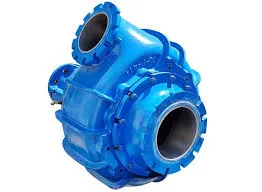Khmer
- Afrikaans
- Albanian
- Amharic
- Arabic
- Armenian
- Azerbaijani
- Basque
- Belarusian
- Bengali
- Bosnian
- Bulgarian
- Catalan
- Cebuano
- Corsican
- Croatian
- Czech
- Danish
- Dutch
- English
- Esperanto
- Estonian
- Finnish
- French
- Frisian
- Galician
- Georgian
- German
- Greek
- Gujarati
- Haitian Creole
- hausa
- hawaiian
- Hebrew
- Hindi
- Miao
- Hungarian
- Icelandic
- igbo
- Indonesian
- irish
- Italian
- Japanese
- Javanese
- Kannada
- kazakh
- Khmer
- Rwandese
- Korean
- Kurdish
- Kyrgyz
- Lao
- Latin
- Latvian
- Lithuanian
- Luxembourgish
- Macedonian
- Malgashi
- Malay
- Malayalam
- Maltese
- Maori
- Marathi
- Mongolian
- Myanmar
- Nepali
- Norwegian
- Norwegian
- Occitan
- Pashto
- Persian
- Polish
- Portuguese
- Punjabi
- Romanian
- Russian
- Samoan
- Scottish Gaelic
- Serbian
- Sesotho
- Shona
- Sindhi
- Sinhala
- Slovak
- Slovenian
- Somali
- Spanish
- Sundanese
- Swahili
- Swedish
- Tagalog
- Tajik
- Tamil
- Tatar
- Telugu
- Thai
- Turkish
- Turkmen
- Ukrainian
- Urdu
- Uighur
- Uzbek
- Vietnamese
- Welsh
- Bantu
- Yiddish
- Yoruba
- Zulu
Telephone: +86 13120555503
Email: frank@cypump.com
ធ្នូ . 13, 2024 14:32 Back to list
OEM High Performance Slurry Pump for Reliable and Efficient Liquid Handling Solutions
High Head Slurry Pumps A Key to Efficient and Reliable Operations
In various industrial applications, the efficient management of slurries is critical to maintaining productivity and ensuring operational reliability. High head slurry pumps have become a vital component in industries such as mining, construction, and wastewater management due to their ability to handle abrasive materials effectively and transport dense mixtures over considerable distances with minimal energy consumption.
Understanding High Head Slurry Pumps
High head slurry pumps are specially designed to move slurry mixtures consisting of liquid and solid particles. The term high head refers to the pump's capability to generate a high discharge pressure, allowing it to lift materials to considerable heights. This characteristic is particularly beneficial in applications where the distance between the source of the slurry and the end destination is significant, or where the elevation differences are substantial.
Key Features and Benefits
1. Durability and Abrasion Resistance One of the standout features of high head slurry pumps is their construction materials. They are typically made from robust materials such as high-chrome alloys or rubber compounds designed to withstand the abrasive nature of slurries. This durability reduces wear and tear, enhancing the pump's lifespan and minimizing maintenance costs.
2. Versatility High head slurry pumps can handle a wide variety of slurry types, including those containing harsh chemicals, heavy metals, or coarse sediments. This versatility makes them suitable for a range of industries, from mining operations that require the transport of ore slurries to wastewater treatment facilities dealing with thick sludge.
3. Energy Efficiency Modern high head slurry pumps are designed with advanced hydraulic designs that optimize energy consumption. By improving hydraulic efficiency, these pumps can deliver higher flow rates and pressures while using less energy, leading to significant cost savings over time. This efficiency is particularly important in large-scale operations where energy costs can constitute a substantial portion of overall expenses.
oem high head slurry pump for efficient and reliable ...

4. Reliable Performance Reliability is paramount in industrial applications. High head slurry pumps are engineered to operate continuously under demanding conditions, with features such as multi-stage designs that allow for higher lift capabilities without sacrificing performance. This reliability ensures that operations remain uninterrupted, preventing costly downtimes.
Applications
The applications for high head slurry pumps are extensive. In the mining sector, they are essential for transporting tailings and slurry from processing plants to disposal areas. In construction, they handle cement-based slurries for various applications, while in the agriculture and wastewater sectors, they manage the removal of sediment and sludge from treatment facilities.
Moreover, high head slurry pumps are increasingly being utilized in environmental remediation projects where contaminated materials must be removed or treated. Their capacity to handle difficult slurry mixtures makes them an indispensable tool for maintaining environmental standards and ensuring regulatory compliance.
Conclusion
As industries continue to evolve and face new challenges, the importance of efficient and reliable slurry management becomes increasingly evident. High head slurry pumps offer a powerful solution to these challenges, combining durability, versatility, and energy efficiency in one package. By investing in high-quality high head slurry pumps, companies can enhance their operational efficiency, reduce costs, and significantly improve the reliability of their processes. Whether in mining, construction, or wastewater management, these pumps are a cornerstone for successful operations, making them an essential component for any industrial application that requires the handling of persistent and challenging slurry mixtures.
As technology advances, we can expect even more innovations in pump design and functionality, further improving their efficiency and performance in the years to come. Embracing these advancements will be crucial for industries aiming to thrive in an increasingly competitive and sustainability-conscious market.
-
High-Performance Air Pumps for Sand & Gravel | Efficient Transport
NewsAug.03,2025
-
ISG Series Vertical Pipeline Pump - Chi Yuan Pumps Co., LTD.|Energy Efficiency, Corrosion Resistance
NewsAug.03,2025
-
ISG Series Pipeline Pump - Chi Yuan Pumps | Energy Efficiency&Compact Design
NewsAug.03,2025
-
ISG Series Vertical Pipeline Pump - Chi Yuan Pumps Co., LTD.|High Efficiency, Low Noise, Durable
NewsAug.02,2025
-
ISG Series Vertical Pipeline Pump - Chi Yuan Pumps | High Efficiency, Low Noise
NewsAug.02,2025
-
ISG Series Vertical Pipeline Pump- Chi Yuan Pumps Co., LTD.|High Efficiency&Compact Design
NewsAug.02,2025










